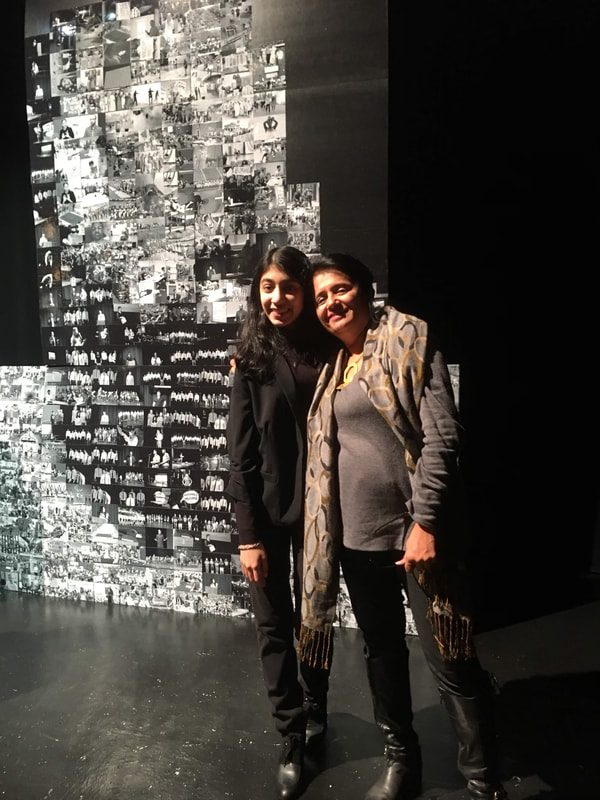|
By Aaron Zhang “I would describe myself usually as a person of words,” Mehek Gosalia said. This may seem counterintuitive, considering how she incorporates STEM in art—in our conversation, she made coding analogies to describe her work. However, she explained that she uses technological and artistic mediums to explore non-verbal communication. Gosalia’s mother and aunt—an animator and an architect, respectively—both inspired her to adopt this interdisciplinary mindset. They “really changed the narrative, because both of them were raised in a very ‘STEM household,’” she said, “but both of them, in some way, found art through STEM.” Gosalia frames her intersection of art and technology primarily through the lens of social justice. She has been designing the artwork for her school’s Martin Luther King Jr. Day assembly since eighth grade. One standout piece, a 27 by 12-foot collage installation of political protests and school social justice events, aimed to parallel movements large and small, conveying the historical effects of every person’s actions. In making these pieces, Gosalia examines civil rights symbols, the significance of colors, cultural allusions, and ways to engage the audience. “I just need to put in what I want to get out,” she noted when asked why she finds this in-depth research necessary. “It's a mandatory assembly about social justice, for an hour,” she said. “What is one thing I can do to make it less easy for people to sleep through it?” Lead with empathy. Gosalia wants people to connect and to have conversations with her. Her role in assembly “is not just to promote what I believe in, but to have empathy,” she said. She talks with those who disagree with her and tries to look at issues from their perspective. Gosalia also asks for reference—for example, she talks with Black Americans to learn about their experiences when creating pieces for MLK Day. Asking for reference is “a benefit rather than a burden,” she believes. As long as one asks for reference, “we shouldn’t be scared about making art about anything other than our experiences.” And these principles extend to technology, as well. Gosalia’s Mehek Box is an innovation designed to support students with disabilities in music education. In developing the Box, she asked disability educators and people with disabilities for reference and focused on accessibility through multisensory capabilities. “I’ve also learned just so much about what it means to make something for a population that isn’t yourself,” she said. Gosalia built her research into her Mehek Box, a music education tool that teaches rhythm in a multisensory way to widen accessibility. Gosalia explained that the idea was for students with different disabilities to “find a different way to access the same information.” Her work with the Mehek Box demonstrates Gosalia’s artistic motivation. For her, social justice is driven by people and messages. “My motivator has always been the story I want to tell,” she said. Through technology, activism, and art, Gosalia shows that “art is more than a visual exercise of beauty.” It’s a culture, a narrative, and a form of representation. Through her artwork, Gosalia can share about her lived experience as a person of color in America, her connection to her culture, and her innovations that include. Mehek Gosalia is putting in empathy, design, and technology for all. Images courtesy of Mehek Gosalia.
0 Comments
Your comment will be posted after it is approved.
Leave a Reply. |
Archives
February 2023
Categories
All
|



 RSS Feed
RSS Feed